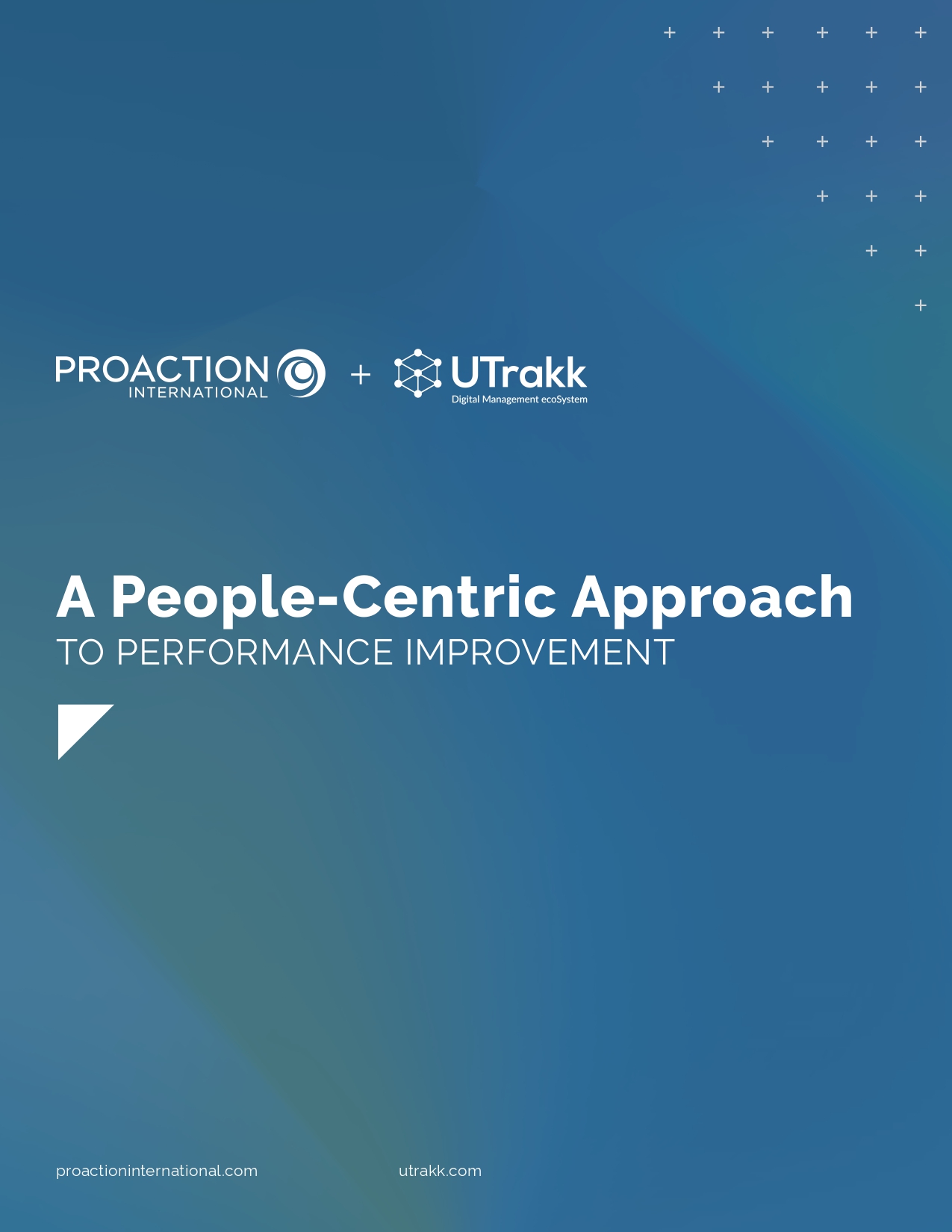Workplace health and safety: A human and strategic imperative
In the manufacturing industry, workplace incidents caused by tools placed in the wrong place, obstructed traffic routes, or cluttered workspaces put employees at risk.
Often preventable, these incidents can result in physical injuries, sometimes serious or permanent, as well as psychological repercussions that profoundly affect the quality of life of those involved. They can also impact personal lives by limiting independence, reducing income, and creating tensions at home.
Beyond its fundamental human aspect, workplace safety is also a strategic business imperative. Indeed, if we disregard the individual and the physical and psychological consequences, workplace accidents can have serious implications for an organization:
-
Immediate disruption of production
-
Loss of confidence and team disengagement
-
Direct and indirect costs (time off, healthcare expenses, replacements, repairs, investigations, etc.)
Construction site injuries cost an average of $40,000 in direct expenses, such as medical bills and workers’ compensation, according to the National Safety Council. Add indirect costs like downtime, rework, and morale loss, and the total can hit three times that amount. Severe incidents involving multiple workers or equipment damage can easily cross the $1 million mark.
Conversely, a safe environment promotes:
-
Employee engagement and well-being
-
Operational stability
-
Attractiveness of the organization
The importance of building a culture of safety
Establishing a health and safety policy is a good starting point, but it’s not enough in many manufacturing environments. To go further and build a strong and sustainable safety culture, companies must take concrete actions, involve teams at all levels, and strive for continuous improvement.
Team leaders must be present on the shop floor by performing safety walks – which are regular, structured routines that ensure the implementation and enforcement of health and safety practices in the workplace. In addition, all employees must feel accountable for maintaining organized, clean, and safe workspaces.
This is where 5S comes in as a cyclical methodology for continuously anticipating and reducing potential hazards in manufacturing work environments.
What is the 5S methodology?
5S is a Japanese approach based on Lean Manufacturing and the Toyota Production System, developed by Toyota Motor Company. Its name refers to five Japanese words beginning with the letter “S” and describing the key steps required to improve workplace organization and efficiency:
-
Sort (Seiri): Sort what’s necessary and what’s unnecessary in the work environment, and eliminate unneeded items.
-
Set in order (Seiton): Efficiently organize remaining items, tools, etc. by carefully identifying and storing them to facilitate use.
-
Shine (Seiso): Inspect and clean workspaces and production lines to prevent non-conformities.
-
Standardize (Seiketsu): Establish standardized procedures and visual cues to maintain the order achieved through the previous steps.
-
Sustain (Shitsuke): Cultivate discipline and rigor to support new daily work practices.
At first, these steps seem simple and obvious: sort, tidy, clean – who doesn't aim for an organized workplace? However, the true strength of 5S lies in its regularity, collective application, and organization’s continuous improvement efforts. It helps create a clean, stable, and controlled work environment designed to reduce waste, and improve efficiency and safety through less clutter.
Benefits of the 5S methodology:
The 5S system brings many benefits to employees and companies:
-
Time saved moving and searching for tools
-
Improved machine operation
-
Increased control over production processes
-
Streamlined workflows and improved operational efficiency
-
Improved quality of life at work
-
Better team morale and engagement
However, another critical benefit stands out: safety. In fact, many argue it should be recognized as the sixth “S” in the 5S methodology. Implementing 5S in manufacturing environments enables anticipation rather than reaction, drastically reducing the risk of accidents by eliminating hazards – even those that are not immediately visible.
5S health and safety: How the 5S methodology fosters workplace safety
By structuring sorting, tidying, and cleaning, and by fostering discipline, the 5S methodology provides the mechanisms of prevention employees need to work safely. Here's how each step helps prevent incidents and ensure a safer work environment, along with examples that can be applied to both the production floor and the office.

1. Seiri – Sort to eliminate hazards
A workstation cluttered with unnecessary items and unneeded equipment increases the risk of falls, collisions, or wrong handling postures. Ask yourself the following question: Is this item useful here and now? If the answer is no, it creates clutter, confusion, and even safety risks. Eliminating waste begins with identifying what doesn’t belong in the workspace.
Examples:
-
Clear dormant or defect stock that clutters store aisles.
-
Remove broken or unnecessary items from toolboxes.
-
Delete documents describing obsolete processes and procedures.
Risks avoided:
-
Falls and injuries due to clutter
-
Mishandling of items and tools
-
Confusion between compliant and defective equipment
2. Seiton – Set items in order for safe and easy access
This step is about combating chaos through organization and visual management – it depicts the expression "everything in its place." Setting in order means creating a visual workplace where all needed items, tools, etc. are located in a logical, clearly visible, and intuitive place.
Properly organizing the workspace allows you to quickly access what you need without risk of injuries or wasted time. Good organization also prevents obstruction of emergency exits or safety equipment.
Examples:
-
Install shaded areas (shapes drawn on the wall or panel) for objects and tools.
-
Ensure all emergency tools and storage areas are properly labeled.
-
Place fire extinguishers in such a way that they are easily accessible.
Risks avoided:
-
Injuries due to misplaced objects
-
Emergency tools unreachable in an emergency
-
Ergonomic problems causing musculoskeletal disorders
3. Seiso – Tidy up to prevent workplace hazards
Cleaner work environments = fewer hazards. Regular cleaning materials and workstations is an active inspection operation that allows you to identify potentially severe risks, such as chemical leaks, hazardous materials, missing screws or parts, etc. Keeping a shop floor clean through waste reduction and organization means taking preventive action to ensure workplace health and safety (WHS).
Examples:
-
Integrate daily cleaning in operators’ regular work duties and tasks.
-
Use safety walk checklists including critical items to monitor.
-
Execute regular audits and floor tours to identify gaps.
Risks avoided:
-
Incidents due to worn materials or undetected leaks
-
Progressive deterioration of equipment
-
Ignoring signs of major breakdowns
4. Seiketsu – Standardize to make safety visible
Standardization makes best practices visible, understandable, and reproducible by all workers. Its goal is to establish common routines and benchmarks through visual management tools (color codes, safety pictograms, etc.), maintenance protocols, and safety checklists.
Examples:
-
Create 5S standard procedures for each work area (visual sheets and checklists)
-
Apply color-coding for hazardous products
-
Define standard storage locations for personal protective equipment (PPE)
Risks avoided:
-
Omissions or discrepancies during shift changes
-
Confusion regarding products used
-
Progressive deviations from PPE best practices
5. Shitsuke – Support new practices to sustain the approach
The last “S” in the 5S methodology refers to daily discipline, i.e., complying with rules and maintaining efforts over time by all employees, without exception.
A company where every employee embraces the safety principles and practices of 5S is more proactive in dealing with potential hazards that may arise in the workplace.
Examples:
-
Include 5S principles in supervision tours (Gemba Walks).
-
Develop best practices through coaching and training.
-
Monitor KPIs related to workplace health and safety.
Risks avoided:
-
Slacking off after a period of effort
-
Return to initial clutter
-
Multiplication of minor deviations leading to severe hazards
Supporting 5S methodology and workplace safety with UTrakk
UTrakk Daily Management System (DMS) enables leaders to implement and sustain 5S principles by structuring safety management routines, prioritizing effective actions for continuous improvement, monitoring KPIs, and standardizing WHS best practices:
-
Ritualized floor tours: With periodic safety audits and tours planned in its Rituals module, UTrakk allows you to check key 5S parameters, use customized checklists, and document any deviations in real time.
-
Structured management meetings: Results of floor tours can be shared during meetings to assess deviations, plan corrective actions, and prioritize improvement projects.
-
Improvement action management: The DMS offers multiple levels of activity – actions, opportunities, projects – to prioritize, plan, and carry out improvements as an integral part of 5S and safety initiatives.
-
Interactive dashboards: The solution allows you to create dashboards to follow up on health and safety KPIs. These metrics make it easy to track trends through clear, visual charts, enabling you to take swift action in the event of a drop in performance or non-compliance.
-
Knowledge Center: UTrakk centralizes standardized procedures and processes, ensuring consistent application of the 5S methodology and associated safety measures.
5S methodology: Simple actions to embed safety in your corporate culture
The 5S methodology shows that a tidy, uncluttered, and clean work environment isn’t only more pleasant, but also helps reduce the risk of accidents and protect employees on a daily basis.
It’s not policies that guarantee employee safety, but everyday actions and routines, repeated visual cues, and common benchmarks on the shop floor. And the 5S methodology excels at this – not by establishing rules, but by making best practices second nature and sustainable.
By eliminating sources of clutter, clarifying work practices for tools and equipment, and standardizing practices and processes, this Lean Manufacturing methodology focuses on process improvement, efficiency, and productivity while elevating work conditions in factories.
What if your company's next action wasn't yet another training course, but a solid 5S implementation supporting a rigorous and preventive safety culture?










